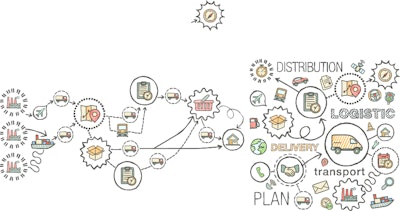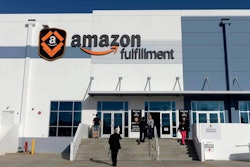
Saying omni-channel fulfillment is all the rage may be something of an understatement. The 900-lb gorilla wearing the Amazon tee shirt has rampaged across the landscape, leaving traditional supply chains gasping for breath. Amazon has transformed the way we think about shopping and gratifying our acquisitive nature. The enormity of the impact continues to be felt and continues to influence strategy in order to mount an effective competitive response.
If you concede we are living in an era of ‘permanent volatility,’ with higher customer expectations and shorter product life cycles, then you probably will also concede that traditional supply chains simply aren’t nimble or agile enough to respond to rapidly changing market signals and consumer demand.
The art and science of figuring this out and getting it right is not for the faint of heart. The multi-echelon supply chain is conceptually simple, but its realization and execution is challenging and difficult.
So, what is ‘omni-channel fulfillment’ anyway? Definitions vary and are certainly customizable, depending on who’s making the case. This diagram presents a simplified vision of one version. The basic objective is to both reach the end-user most effectively and improve the customer experience by whatever means works best for your given market.
Few have mastered the art, although many are trying. There is fairly compelling and clear evidence that the traditional ‘brick and mortar’ retailer faces as an uphill battle in the in the wake of an onslaught from multiple dimensions. On the other hand, there are those who believe ‘pure-play’ on-line retailing is unsustainable over the long haul. That suggests that some form of hybrid model will win out, but what will it look like?
Clearly, the model for grocery will look quite a bit different from the model for auto parts or apparel. Probably the biggest single challenge grocers face that is unique to them is approximately 50% of their sales revenue stems from produce. Perishable product does not lend itself to the same sort of handling that works for bedding, shoes, TVs or furniture.
One of the key advantages grocery operators do have over other retailers is their density in large metropolitan areas. One of the reasons Amazon is looking to establish warehousing capabilities in densely populated areas is so they can readily offer same-day delivery. This requires an intimacy and closeness with the target market that simply isn’t possible from national and regional fulfillment centers.
Where there may be one or two Macy’s or Nordstrom’s, a Metroplex, like Boston lists 20 Stop & Shop stores. So the physical presence lends itself to a different fulfillment model, which – in addition to the common in-store pick-up - might include home delivery and a hybrid model of on-line ordering and drive-through pick-up. The delivery model, though, is the easier equation to solve for.
Supporting a multi-channel delivery model requires a nimble, agile supply chain and the attendant order management and supply chain planning and execution technology to pull it off. It also requires comprehensive connectivity with all trading partners up and down the line, from growers to packers; canners and distributors, transportation companies and all of the in-house DCs, stores and delivery fleets.
Solving the produce challenge is probably obstacle Number-1 for most grocery retailers. Multiple handlings and time in transit are the enemies of freshness. And, while people may blame the cookie, cereal or dairy producer for stale or out-of-date product, they almost always blame the store for failures in the produce department. This is critical to get right, all the time.
Network modeling, using very advanced, sophisticated analytical tools employed by skilled and experienced modelers, usually third-party consultants, are frequently deployed to determine how a service network should be structured to optimize results from both a cost and customer impact standpoint. Combining network modeling capabilities with data gleaned from customer surveys to determine key preferences in terms of buying behaviors, attractive product assortment, delivery preferences, and drive-time limits will help inform the strategic approach to the scope and scale of multi-channel fulfillment.
Critical to success is developing the proper strategy and roadmap for execution and then testing it in a key market or two before introducing a major launch. This requires a solid, informed and data-driven understanding of the customer base, buying habits and preferences, which will not be the same in every market. Taking the first step requires those basic elements and a vision of what the “To-Be” model might look like and the gaps that need to be closed from the current “As-Is” state in order to achieve the objective.
Properly planned and executed, flexible fulfilment models can help transform an organization from an also-ran or one-of-the pack into an industry leader. In the final analysis, it’s all about finding the right model and then executing flawlessly.












![Pros To Know 2026 [color]](https://img.sdcexec.com/mindful/acbm/workspaces/default/uploads/2025/08/prostoknow-2026-color.mduFvhpgMk.png?ar=16%3A9&auto=format%2Ccompress&bg=fff&fill-color=fff&fit=fill&h=135&q=70&w=240)





